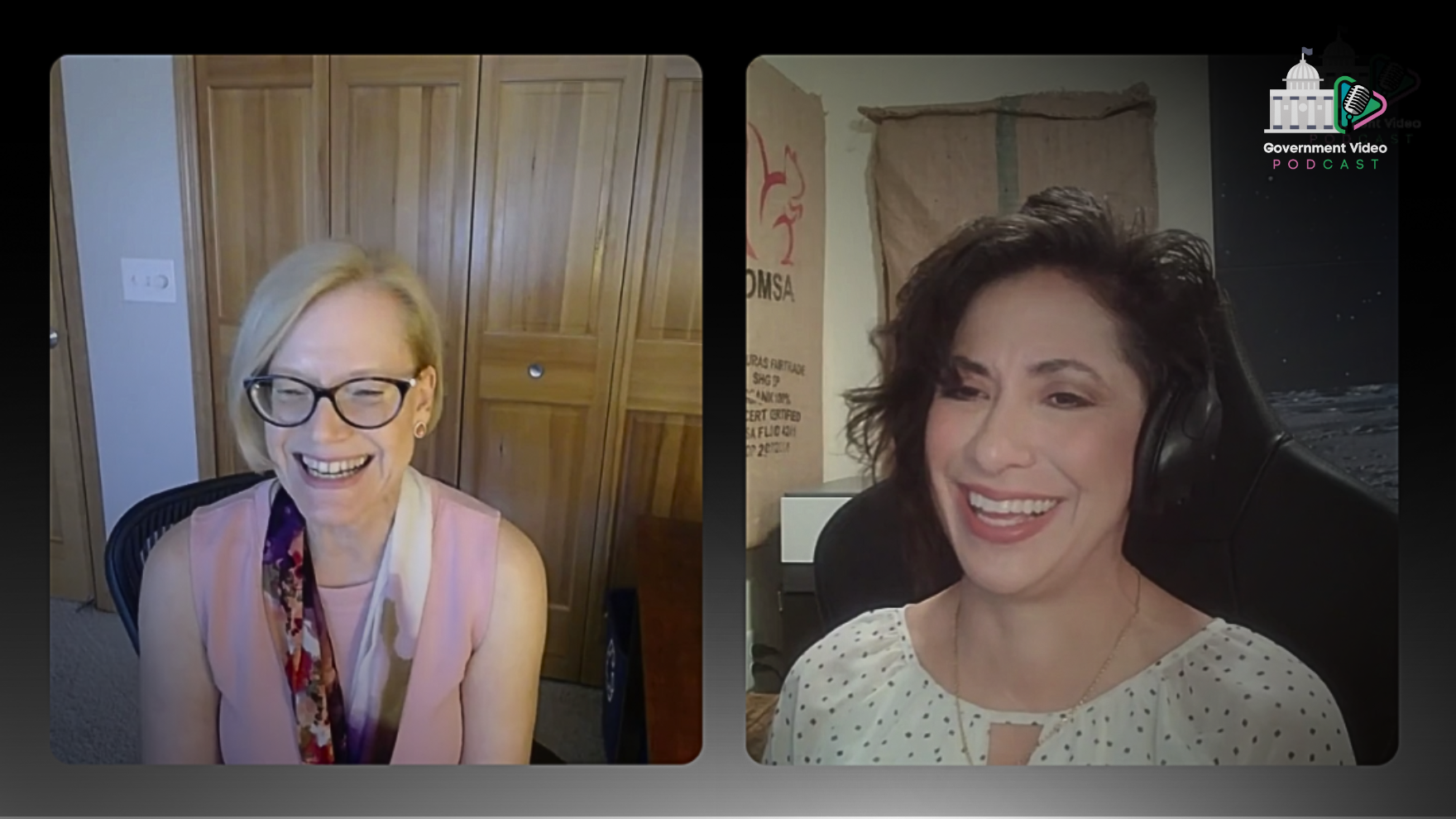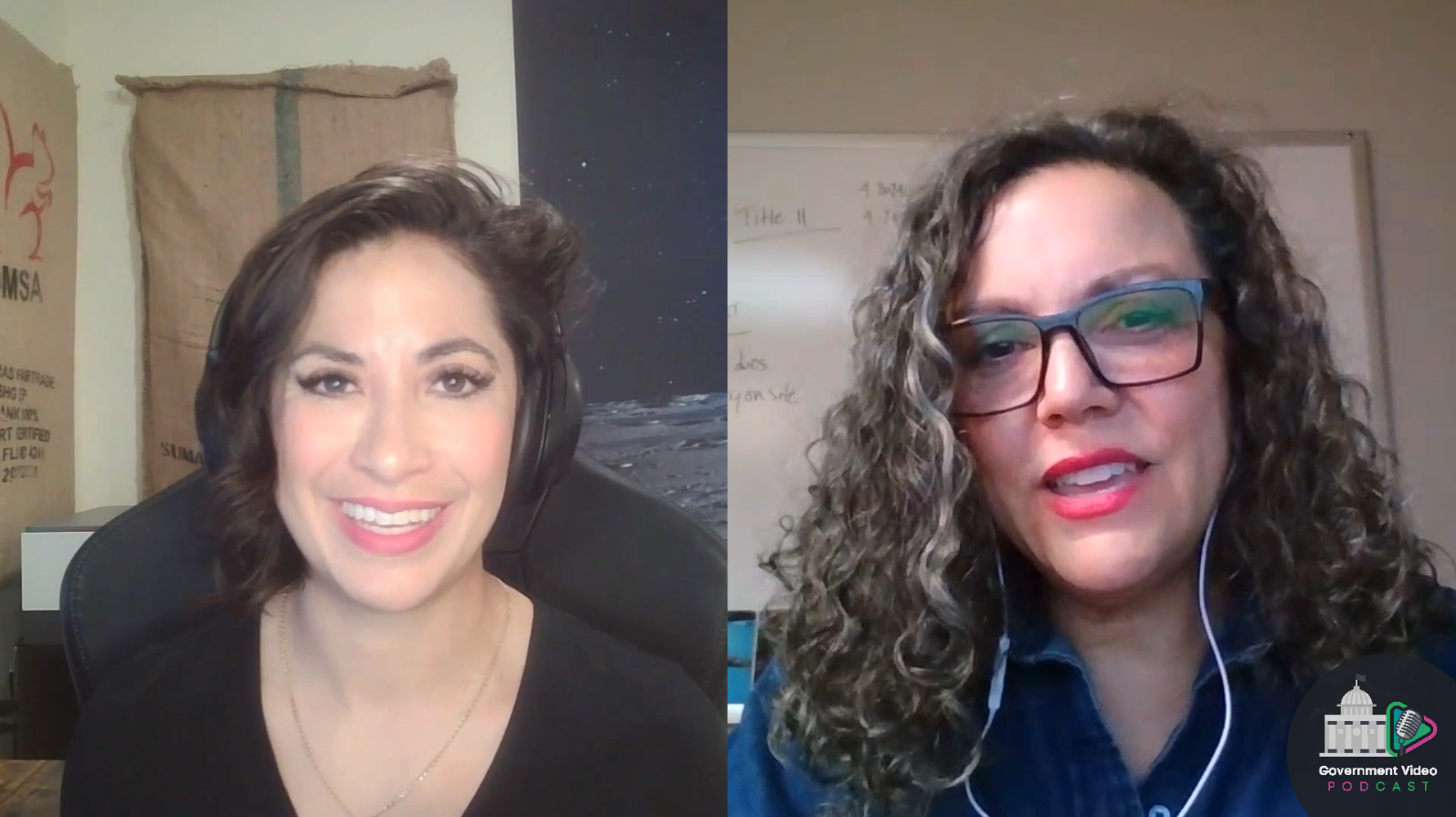
Lynn Wehrman, founder of WeCo (left), and Dana Healy, COO of Tightrope Media Systems (right), share insights during a Government Video Podcast episode celebrating the 35th anniversary of the ADA.
Hey, everyone, Dana here. July 26 marked the 35th anniversary of the day President George H.W. Bush signed into law the Americans with Disabilities Act of 1990. We decided to host a special live edition of the Government Video Podcast to celebrate the civil rights law and how it relates to digital media accessibility. Joining us for this episode was Lynn Wehrman, the president and founder of WeCo, a company that helps website designers and developers improve accessibility.
City governments across the country are facing a new frontier: the digital public space. From websites to video portals, civic information no longer lives solely on paper or in-person—it lives online. And that means accessibility standards must evolve, too.
At a time when nearly every city department uses digital platforms to inform and engage, ensuring equitable access to content is not just a legal obligation, it’s a civic responsibility. Digital accessibility is about making sure every resident, regardless of ability, can fully participate in public life.
Historical Context
“Prior to the ADA, it was very acceptable to exclude people with disabilities,” Wehrman recalled. “People with disabilities were thought of as a different type of person, and it was very common to assume that people with disabilities did not have the same level of intelligence, that they did not deserve the same standard of living.”
In 1990, the ADA was focused on physical spaces such as curb ramps, elevators, and accessible restrooms. Fast-forward to today and the definition of a “public space” includes mobile apps, websites, live-streamed city council meetings, and on-demand video content. These digital environments are where residents find essential information, voice opinions, and stay connected to civic happenings.
According to Wehrman, originally there were no ADA web rules. Instead, the government was relying on the Rehabilitation Act of 1973, Section 508, for accessibility standards. However, the World Wide Web Consortium (W3C) created the Web Content Accessibility Guidelines (WCAG), which have become a widely accepted universal standard.
Where Cities Stand
Many cities are just beginning to grapple with what accessible city council meetings look like in a digital-first world. With new federal ADA web compliance deadlines approaching in 2026 and 2027 (depending on the size of the municipality), government agencies are working quickly to assess where they stand and what needs to change.
Smaller cities and community media centers often face some of the biggest challenges. Budgets are tight, staffing is lean, and the scope of digital accessibility can feel overwhelming.
Despite these barriers, many local governments are embracing the moment. Cities are launching accessibility audits, reevaluating their media workflows for government communications, and adjusting their strategies to ensure they’re reaching multilingual city services audiences. And Wehrman said there are ways to improve accessibility without breaking the bank.
Accessibility is not about perfection, it’s about progress. A growing number of municipalities are discovering that many improvements—like editing auto-captions before publishing videos or switching to HTML instead of PDF—can be both affordable and highly impactful. Every step toward inclusive government communications builds momentum.
This moment is also driving much-needed cultural shifts inside city halls. Staff are beginning to understand that government meeting accessibility is a shared responsibility, not just a task for IT or legal teams. Training sessions and policy updates are helping city employees learn how to produce accessible content from the start, rather than retrofitting it later.
Collaboration Is Key
Legally speaking, local governments now have clear standards to follow, particularly the WCAG Version 2.1, Level AA guidelines. These cover a wide range of requirements, from screen reader compatibility to captioning and audio descriptions. In particular, video content and live streams must meet online community media ADA requirements, and must be reviewed for accuracy and clarity.
This isn’t just about risk mitigation or legal defense. Cities are finding that accessibility expands engagement. Wehrman shared the story of one Minnesota city that saw a 20% increase in attendance for public events simply by adding American Sign Language (ASL) interpreters. By investing in accessibility, governments aren't just complying, they're building more inclusive and connected communities.
To meet these new standards, city departments are beginning to prioritize collaboration in local government media. They're forging new partnerships with accessibility consultants, training teams, and working across departments to implement sustainable practices.
What’s emerging is a new model for local government media strategies that views accessibility not as a final hurdle, but as a foundational principle.
As we mark 35 years of the ADA, it’s clear that the next era of accessibility is unfolding on screens, not sidewalks. Cities that act now will not only comply with the law, they'll set a standard for equity, inclusion, and civic trust. The ADA may have been born in a pre-digital era, but the future of accessibility is undeniably online.
There’s a lot more to hear about accessibility. Listen to this special edition of the Government Video Podcast here.
Event Replay - Demystifying Closed Captioning: What WCAG 2.1AA Really Requires for Government Video
Get clarity on WCAG 2.1AA captioning requirements. Learn what’s required, what’s recommended, and how to keep your government video content compliant.
.png)









.png)




